Sun: Highest Cosmic Power Worshiped By Ancient People And Represented By Deities
A. Sutherland - AncientPages.com - Most cultures around the world have at some point worshiped the sun as the highest cosmic power, the life force that makes it possible to grow and thrive. As a heat source, the sun symbolizes vitality, youth, passion, and hope, and as a light source represents the enlightenment.
It is also a symbol of the kingdom and the empire. Its rise and fall symbolize birth, death, and resurrection.
Ancient gods and goddesses were worshiped as the personification of the sun. As the sun often represents the world's and humanity's dawn, it is often linked to many creation myths.
Eos, the goddess of sunrise, who was worshiped in ancient Greece, personalize youth, hope, and awakening. She was imagined as a charioteer riding across the sky painted in light colors of the dawn.
Although the sun was usually a male symbol, there were some cultures where it was represented as the female among others in Japan and among some American Indian tribes.
The Greek god Apollo gave the earth the life-giving light. He used to be depicted as a lively youth with golden hair and associated with Helios, the god who drew the sun cart over the sky.
Daedalus was a mythical Greek inventor and skilled craftsman who made artificial wings for his son Icarus and instructed him not to fly too close to the sun. Icarus did not listen and his wings melted in the heat so he fell into the sea and died. Symbolically speaking, he came too close to the sun and the gods; his pride and lack of respect for the divine led to his fall.
Surya was the Vedic sun god who represented immortality. Image source
The Greek myths say that the path of the sun over the sky is symbolized by a chariot driven by Helios, the sun god. Once his son, Phaethon asked him to drive the sun chariot for one day. Unfortunately, he drove the carriage carelessly and was unable to control the horses. He came dangerously close to the earth and Zeus had to prevent a disaster by killing Phaethon with a thunderbolt.
See also:
Winged Sun Disk: One Of The Oldest And Most Important Solar And Religious Symbols
Syamantaka – Divine Jewel With Magical Powers Was A Gift From The Sun God In Hindu Mythology
Freya And Her Lovely Husband Odr, God Of Summer Sun And Passion In Norse Mythology
Surya was the Vedic sun god who represented immortality as well as death and rebirth (the sun's rise and fall). He daily crossed the sky in a chariot drawn by seven fiery horses, which represented the seven rainbow colors.
Dark mythological figures were also related to the sun. Indian demon Rahu lacked body. It was thought that he swallowed the sun, which caused solar eclipses. The demon could not store the sun in his body because he had none, so the sun appeared again in the sky.
A similar myth is also found in the mythology of the Chinese who saw the sun as a powerful symbol of yang. The Japanese use it as a national symbol and believe that their emperor is derived from the sun goddess Amaterasu.
Helios with a radiate halo driving his chariot (Ilion, 4th century BC; Pergamon Museum. source
In beliefs of the ancient Egyptians, the sun on the horizon symbolized ‘brightness’ or ‘splendor’ and the Samoyeds (among indigenous people of Siberia) believe that while the Moon is the evil eye of heaven, the sun is the good one. In one of the world's oldest religious texts, Rigveda composed between 1700–1100 BC, the Sun was ‘resplendent’ or sometimes ‘black’ (or not seen at all), in which case it is associated with underground and funereal animals.
In Greek mythology, legendary Phoenix was a long-lived bird that could regenerate or reborn and in ancient Egypt, called the "Lord of Jubilees", it was believed to be the ba (spirit) of the Sun God Ra.
We must not forget the Egyptian god Khepri who was the god of the sunrise and was associated with scarab forming dung balls, symbolizing the sun's migration across the sky.
Among the Babylonians, the sun god was addressed as "you who illuminate darkness, light up the heavens, and annihilate evil above and below".
The cult of the Sun reached an advanced stage of development in Mexico, Central America, and Peru where there was developed a political system strongly related to the sun. In Peru, the sun was believed to be the divine ancestor of the Inca nation. The sun was seen both as a good and fruitful force and as a destroying and consuming power.
Written by – A. Sutherland - AncientPages.com Senior Staff Writer
Copyright © AncientPages.com All rights reserved. This material may not be published, broadcast, rewritten or redistributed in whole or part without the express written permission of AncientPages.com
More From Ancient Pages
-
 A New Historical Inscription Of Sargon II From Karkemish Examined
Archaeology | Apr 22, 2019
A New Historical Inscription Of Sargon II From Karkemish Examined
Archaeology | Apr 22, 2019 -
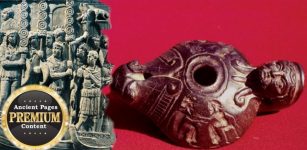 Mysterious Ancient Oil Lamps In Ohio And Wisconsin – Evidence Of Pre-Columbian Contact?
Ancient Mysteries | Dec 20, 2017
Mysterious Ancient Oil Lamps In Ohio And Wisconsin – Evidence Of Pre-Columbian Contact?
Ancient Mysteries | Dec 20, 2017 -
 Nobel Prize: Svante Pääbo’s Ancient DNA Discoveries Offer Clues As To What Makes Us Human
DNA | Oct 12, 2022
Nobel Prize: Svante Pääbo’s Ancient DNA Discoveries Offer Clues As To What Makes Us Human
DNA | Oct 12, 2022 -
 An Ancient Woman’s DNA From A 20,000-Year-Old Pendant – Recovered By Researchers
Archaeology | May 4, 2023
An Ancient Woman’s DNA From A 20,000-Year-Old Pendant – Recovered By Researchers
Archaeology | May 4, 2023 -
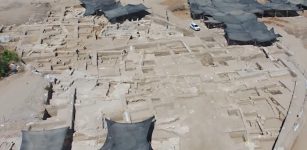 World’s Largest Wine Factory From The Byzantine Period Unearthed In Yavne
Archaeology | Oct 14, 2021
World’s Largest Wine Factory From The Byzantine Period Unearthed In Yavne
Archaeology | Oct 14, 2021 -
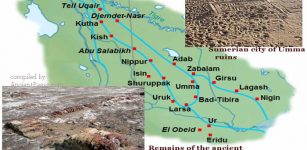 Infamous End Of Lugalzagesi – Ambitious King Who United Sumer
Featured Stories | Apr 30, 2020
Infamous End Of Lugalzagesi – Ambitious King Who United Sumer
Featured Stories | Apr 30, 2020 -
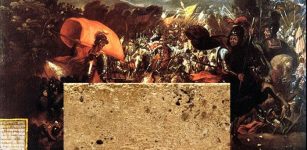 Aztec Treasure: ‘Yew Of Gold’ Found 39 Years Ago Originates From Spanish Plunder During ‘Sad Night’ In 1520
Archaeology | Jan 12, 2020
Aztec Treasure: ‘Yew Of Gold’ Found 39 Years Ago Originates From Spanish Plunder During ‘Sad Night’ In 1520
Archaeology | Jan 12, 2020 -
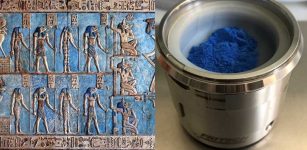 Ancient Egyptian Blue Used To Create New Nanomaterial 100,000 Times Thinner Than A Human Hair
Ancient Technology | Mar 24, 2020
Ancient Egyptian Blue Used To Create New Nanomaterial 100,000 Times Thinner Than A Human Hair
Ancient Technology | Mar 24, 2020 -
 ‘Tonina Chiapas’ Mayan Pyramid In Southern Mexico Is Among The Largest Yet Found
Civilizations | Oct 29, 2018
‘Tonina Chiapas’ Mayan Pyramid In Southern Mexico Is Among The Largest Yet Found
Civilizations | Oct 29, 2018 -
 On This Day In History: Ensisheim Meteorite Fell To Earth – On Nov 7, 1492
News | Nov 7, 2016
On This Day In History: Ensisheim Meteorite Fell To Earth – On Nov 7, 1492
News | Nov 7, 2016 -
 Unique Medieval Cog Shipwrecks And Artifacts Found In Sweden
Archaeology | Dec 3, 2022
Unique Medieval Cog Shipwrecks And Artifacts Found In Sweden
Archaeology | Dec 3, 2022 -
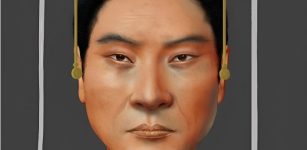 Facial Reconstruction Of Chinese Emperor Wu Who Lived 1,500 Years Ago
DNA | Mar 29, 2024
Facial Reconstruction Of Chinese Emperor Wu Who Lived 1,500 Years Ago
DNA | Mar 29, 2024 -
 Birka: Major Trading Center During The Viking Age
Featured Stories | Feb 12, 2018
Birka: Major Trading Center During The Viking Age
Featured Stories | Feb 12, 2018 -
 The First Conservationists May Have Been Early Pacific Islanders Who Started The Practice 3,000 Years Ago
Archaeology | Sep 29, 2021
The First Conservationists May Have Been Early Pacific Islanders Who Started The Practice 3,000 Years Ago
Archaeology | Sep 29, 2021 -
 Strange Mist, Unexplained Vanishings And Other Bizarre Incidents – What Is The Connection?
Featured Stories | Mar 8, 2019
Strange Mist, Unexplained Vanishings And Other Bizarre Incidents – What Is The Connection?
Featured Stories | Mar 8, 2019 -
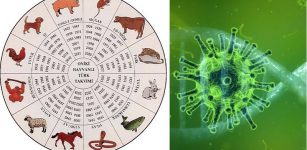 Ancient Calendar Predicted The Coronavirus And Other Disasters In 2020 – History Researcher Says
News | Mar 24, 2020
Ancient Calendar Predicted The Coronavirus And Other Disasters In 2020 – History Researcher Says
News | Mar 24, 2020 -
 Countless Artifacts, Structures And Roads Discovered In Ancient City Of Aigai, Turkey
Archaeology | May 16, 2022
Countless Artifacts, Structures And Roads Discovered In Ancient City Of Aigai, Turkey
Archaeology | May 16, 2022 -
 Aluminum Was Used At Least 7,000 Years Ago – Long Before The Metal’s Official Invention In 1825
Ancient Technology | Jul 10, 2017
Aluminum Was Used At Least 7,000 Years Ago – Long Before The Metal’s Official Invention In 1825
Ancient Technology | Jul 10, 2017 -
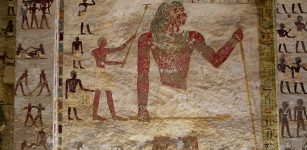 Rock-Cut Tombs Of Beni Hasan With Spells, Prayers To Osiris And Anubis And Map To Underworld
Civilizations | Feb 3, 2017
Rock-Cut Tombs Of Beni Hasan With Spells, Prayers To Osiris And Anubis And Map To Underworld
Civilizations | Feb 3, 2017 -
 Ancient Monuments The World Is Not Allowed To See – Reason For Denial? – Part 1
Ancient Mysteries | Aug 24, 2020
Ancient Monuments The World Is Not Allowed To See – Reason For Denial? – Part 1
Ancient Mysteries | Aug 24, 2020



